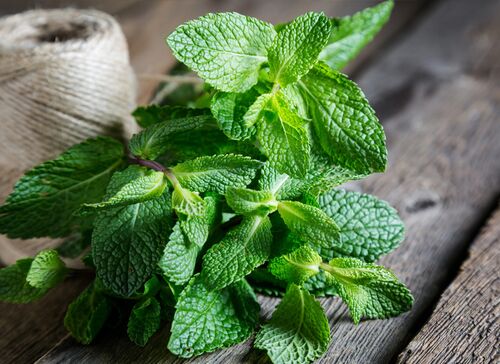How to grow Mint

Mint (Mentha) belongs to the mint family and has a strong peppermint taste and smell. There are different varieties of mint plants, such as spearmint, peppermint, chocolate mint, Moroccan mint, etc. The spice is, among others, widely used in Arabic, Indian, Turkish and Greek cuisine. A cup of mint tea is of course very well-known. Mint is not difficult to grow. Please note, the plant can propagate to form new plants through wide-spreading rhizomes. Mint can take over your garden very quickly.
Growing mint from seeds
Growing mint yourself is not difficult. It is a perennial plant that dies back over winter. There are many different types of mint with a slightly different smell and taste. It is a strong plant that can spread far and wide because it forms thick creeping roots, also called rhizomes. The plant blooms from June to September with beautiful white/purple flowers. Besides being used in cooking, mint is also grown to attract insects as bees, bumblebees and butterflies.
Mint is also grown to repel harmful insects and it attracts bees, bumblebees and butterflies, and repel harmful insects.
Sowing and planting of mint
Mint can be either pre-sown or sown directly in the garden. Pre-sowing can be done from March, after which the plants can be planted outside from the end of April and May. Let the plants harden off first. You can sow directly in the garden in April and May. Because mint is a light germinator, the seeds should be covered with a thin layer of soil or just press them in.
Position and soil of Mint
Mint prefers a sunny spot in the garden, but the plant also does well in partial shade. The soil should be moist and nutritious. Before sowing, compost can first be added to the soil. Keep a planting distance of about 15 x 40 cm.
How to care for your mint plants
The plant needs a lot of water, especially in dry periods. Mint does not need a lot of nutrition, but because it can stay in the same place for a long time, it is important to fertilize from time to time. Use, for example, fertilizer for herbs.
When and how to harvest mint?
In general, harvesting can be done as soon as the mint plants are large enough. The optimal time to harvest is after the plant is about 10 cm in height and before it starts flowering. This is often from June to November, depending on the weather. Branches with leaves can be cut off. Do leave enough branches on the plant and harvest regularly so the plant can regrow.
How to preserve mint
Mint can be stored in the refrigerator for several days. Wrapping them in damp paper towels will keep them fresh a little longer. Mint can be frozen fresh and kept in a freezer for about a year. Mint can also be dried. This can be done by hanging the mint in bunches in an airy, warm place, but also in a food dehydrator or oven.
Is mint healthy?
Mint is high in vitamins C and E and the minerals phosphorus and calcium. It contains many antioxidants. Mint is said to aid digestion, relieve menstrual pain, have an anti-inflammatory effect, and help to reduce stress. Mint can help with cold symptoms and provides fresh breath.
Mint seeds in our collection
In our webshop you can find different types of mint, such as spearmint and peppermint. We also offer a herb seed package with widely used herbs, including mint.
Tips to grow mint
Mint is easily propagated by tearing cuttings from the plant. These cuttings can simply be planted back in the garden or planting pot.



